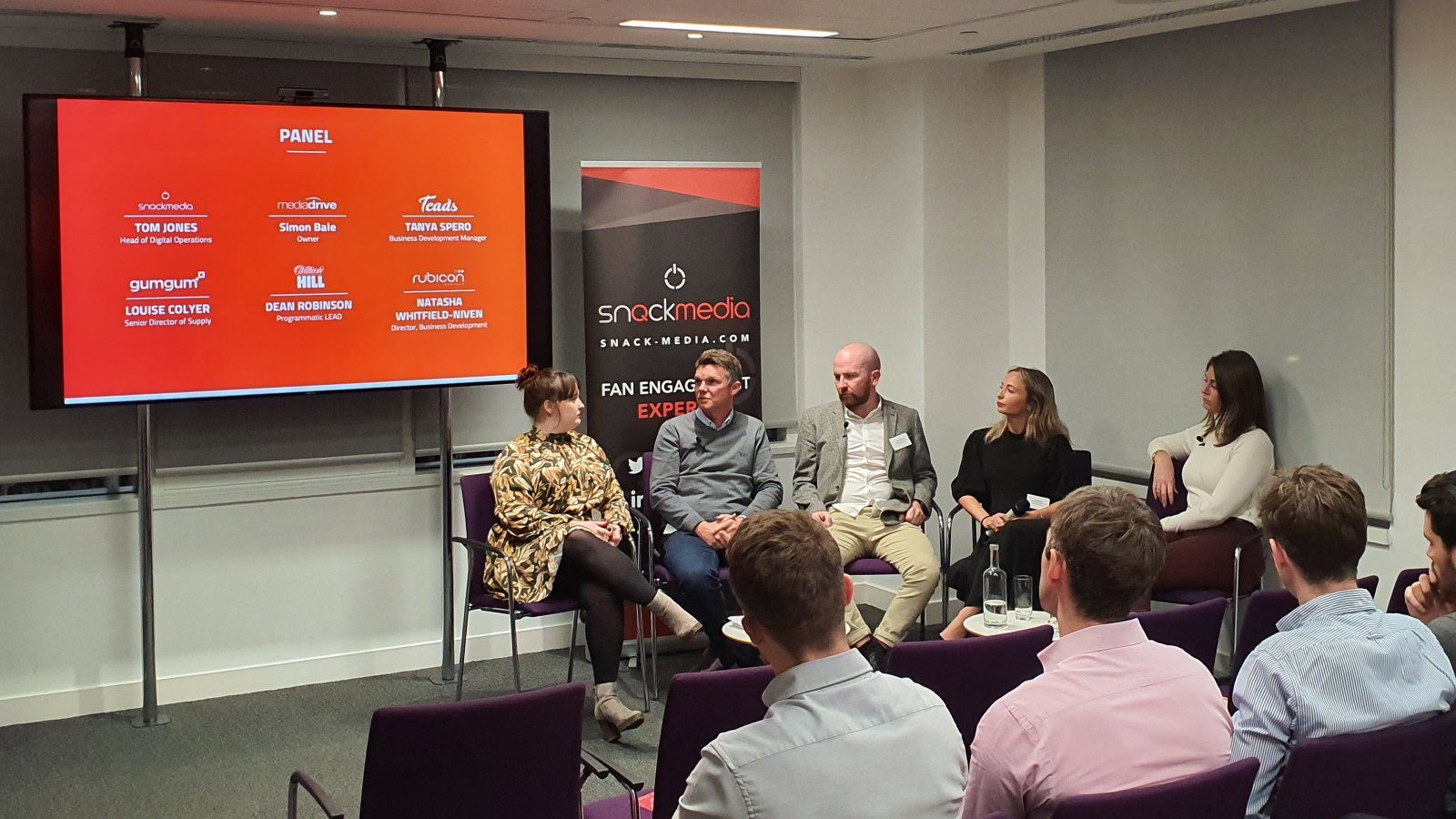Our five takeaways from the Sports Publisher Summit
Digital Sport & Snack Media hosted a fantastic panel as Tom Jones, Simon Bale, Natasha Whitfield-Niven, Dean Robinson, Tanya Spero and Louise Colyer joined us at Howard Kennedy for the Sports Publisher Summit.
The five panellists all had unanimously tremendous knowledge, and their understanding of specialities in the industry blended nicely as their differing roles and day-to-day tasks meant as a panel they could draw on all aspects of advertising for publishers. After a great night of insight from industry experts who debated the ever-changing nature of the publisher-advertiser industry, Digital Sport has found five stand-out takeaways from the night of discussion.
Advertising to get more intrusive/engaging?
Simon Bale might have taken those who hadn’t considered a return to full-screen advertising by surprise when he suggested the idea, but perhaps when considered carefully, the idea isn’t as crazy as it sounds. Of course, if full-screen advertising were to make a comeback, it has to be done in a completely consumer friendly way, and Simon was quick to reiterate that this had to be the case.
The concept “doesn’t have to be intrusive”, and in fact he encourages that it shouldn’t be. If an advert is engaging and relatable to a consumer, in that it’s something they want to know more about, then suddenly the size of an advert doesn’t have such an impact as to whether it’s considered intrusive or not as the user is enjoying the experience it’s providing them with.
Everything is measurable
Louise Colyer touched on the advancements of technology as she stated that “everything is measurable”. Alluding to the fact that once upon a time the value of advertising was much harder to understand and certainly to derive a quantifiable number from (and still is in print for example). However, in this day and age Louise believes the true value of advertising can be measured, which gives the industry a huge advantage.
This leads to a far better understanding of what consumers and advertisers can expect, what they should realistically look to achieve, and therefore making everybody function far more efficiently. It may not benefit those who were getting a much better deal out of advertising than they might have realised, but this will ensure that fair prices for advertising are paid.

Getting advertisers away from cookies
The ‘cookie’ has become really crucial when understanding how a lot of advertising works online. For the average user, cookies often have to be consented online, and for the most part they don’t impact the consumer too much. However, steps have been put in place to ensure this method of advertising is moved away from, towards a more contextual form.
A ‘cookieless’ world is what some people in the industry are aspiring to now, but this isn’t always proving easy. Tanya herself explained that often they’re finding it hard to try to “help to get buyers out of their comfort zone by showing them they can hit their audiences in new environments using contextual data.”
Brexit is affecting the industry
With Brexit set to endure another delay, a night of sports publisher discussion wasn’t enough to keep the biggest talking point of our recent political history out of attendees’ minds.
When asking the panel where they see the industry in six months time, Tanya alluded to the fact that uncertainty is a big issue in business and that the advertising sector was not immune to it.
She said: “Brexit has caused uncertainty amongst businesses. Guaranteed outcomes are going to become very important for everyone, so people are being a bit more careful.”
As nobody quite knows what the financial state of the country will be nor what or how they’ll be able to conduct business, there’s hesitancy that’s stalling big deals or future projects for development in this industry, where R&D is extremely important for taking both publishers and advertisers forward. With more clarity from Brexit (if that’s to ever come) will come more movement in this and in any industry.
Relationship between advertisers and publishers
The relationship between advertisers and publishers has been a strained one over the years, but that has been predicted to change with a dynamic and constantly evolving industry. Both advertisers and publishers are having to accept that their work is constantly being changed and regulated in different ways, and in order to stay unique and relevant, the two entities are having to come together more and more.
Simon said he thinks “there’s more collaboration for content” than ever before, which illustrates the changes that are going on in the industry. Meanwhile Dean mentioned that he believes that while there is sometimes distance and miscommunication, “there’s different teams on the advertiser side who have different relationships with publishers”, and so ultimately you can’t generalise the situation completely.
If you’re interested in attending a Digital Sport event as a guest or as a panellist, or want updates on our upcoming Rugby, Euro’s and OTT events, please contact our editor: contact@digitalsport.co.
About author
You might also like
SPORTEL 2021: Day One Recap
This year’s prestigious SPORTEL convention kicked off in sunny Monaco today, welcoming a host of familiar faces as well as plenty of new ones. Doors opened at 8:30am with businesses
Six Founding Riders Set To Bring The Vision Of The UCI Track Champions League To Life
Olympic Champions, UCI World Champions and World Record holders join the new track cycling competition debuting in November 2021 The UCI Track Champions League is delighted to announce that six
Sports related spending to soar this summer as pre-pandemic life resumes
New insights from eBay Ads UK reveal the potential for brands to engage with an excited but nervous nation as sports events get back on track As pubs and indoor








